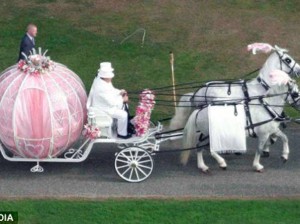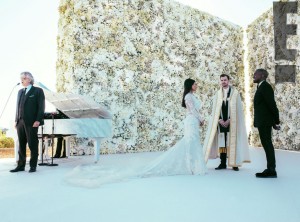In this weeks lectorial we looked at institutions. Brian Morris told us that in order for anything to be an institution it has to be some kind of structure within society that contains social, cultural, political and economic relations as well as principles, values and rules which underlie these relations. An institution is also material but not tangible. All of these things, and more, Hollywood definitely is.
Recently Hollywood has had a ‘run in’ with the law, as its discrimination against women in the industry comes under scrutiny. The American Civil Liberties Union (ACLU) accused Hollywood of gender discrimination through its “‘systematic failure’ to hire female directors.” According to the ACLU, “Fewer women are working as directors today than two decades ago…women represented only 7 percent of directors on the 250 top-grossing movies last year… 2 percentage points lower than in 1998. A recent study commissioned by the Sundance Institute and Women in Film and conducted by researchers at USC shows women have comprised fewer than 5 percent of directors of top films during the past two decades. But about half of film-school students are female. In its letter to the federal equal employment commission… the ACLU writes: ‘Decades have passed and gender disparities remain as stark as they were in the 1970s.'” (Cohen, 2015). These statistics show how far the entertainment industry still has yet to go in terms of reaching equality.
Case in point, the recent ‘Avengers: Age of Ultron’ press tour showed just how ‘genderist’ Hollywood (and in particular gossip magazines) are, as one reporter decided to swap her prepared questions around and ask Mark Ruffalo the questions she was going to ask Scarlett Johansson:
This just shows how gossip magazines and TV shows perpetauate old fashioned, conservative values that preach self criticism, beauty and perfection for women, through only looking at the surface. With ideals such as these being preached throughout Hollywood it’s no wonder that women have actually come out against feminism, as they are criticised for everything to the point where feminism has been given a really bad name. It has become like a sharp stick. But, just because one end of the stick is sharp and pointy, doesn’t mean the rest of the stick is.
In the past couple of years there have been a lot of developments in the way of equality, such as the UN anouncing the ‘He for She’ campaign (heforshe.org, 2015), a campaign designed to foster solidarity for gender equality between both genders, not just women as it has been percieved as only a women’s battle for so many years (hence the word feminist, in a way). Many developments have also occurred in the feminism debate, with many men coming out in support of feminism like Joseph Gordon-Levitt (Gordon-Levitt, 2014) and Joss Whedon (Whedon, 2013), as well as many women coming out against feminism, as evidenced by the creation of the website ‘Women Against Feminism.’
The Center for the Study of Women in Television and Film released its report on 2014, titled “It’s a Man’s (Celluloid) World.” The study looks at “on-screen representations of female characters in the top 100 grossing films every year. In addition to… chronic underrepresentation [and] the prevalence of gender stereotypes… the study also reported on the lack of ethnic diversity among the same media.” (Cipriani, 2015)
Dr. Martha Lauzen who wrote the report stated. “The chronic under-representation of girls and women reveals a kind of arrested development in the mainstream film industry… Women are not a niche audience and they are no more ‘risky’ as filmmakers than men. It is unfortunate that these beliefs continue to limit the industry’s relevance in today’s marketplace.” (Cipriani, 2015)
In Joss Whedon’s speech about the word feminist and equality at the Make Equality Reality event on November 4th 2013, he puts many of these points into perspective and asks the question – why is feminist such a horrible word?:
(Whedon, 2013)
I personally agree with Whedon; like racism, the fight for equality should be a thing of the past and as the word racist plants a firm line between where we are now and a politically incorrect past, a new word should do the same for gender equality. This is where Whedon poses the idea of the word ‘genderist’ (which apparently already existed on the internet, in particular, urban dictionary), giving the idea that the struggle for equality is behind us. But as Whedon points out at the end of his speech, we will always be fighting. Hopefully, as time goes on and more and more battles are won, we will have to fight less and less.
– Cohen, Sandy. “ACLU Accuses Hollywood of Discriminating Against Female Directors.” May 12th 2015. Available at: http://www.huffingtonpost.com/2015/05/12/aclu-hollywood-female-directors_n_7265408.html
– UN Women. “He for She Campaign for Equailty.” Information available at: http://www.heforshe.org/
– Gordon-Levitt, Joseph. Ellen Degeneres Interview, “Joseph Gordon-Levitt on Being a Feminist.” Jan. 9th 2014. Available at: https://www.youtube.com/watch?v=PyVepk8ym4w
– Cipriani, Casey. “Sorry Ladies, study on Women in Film and Television Confirms the Worst.” Feb. 10th 2015. Available at: http://www.indiewire.com/article/sorry-ladies-study-on-women-in-film-and-television-confirms-the-worst-20150210




